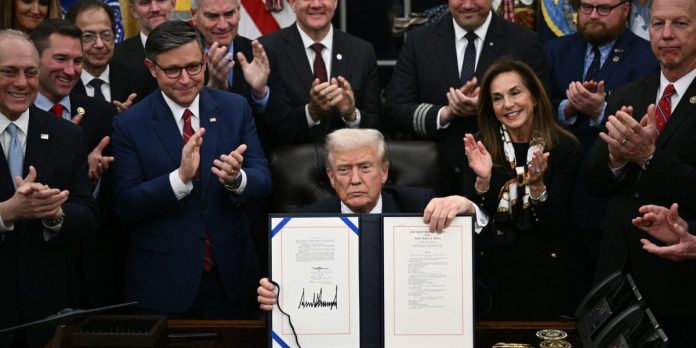Markets, rejoice! The U.S. government shutdown, the longest in history, has finally come to an end. An optimist might assume the funding deal will avert a similar crisis—perhaps until the next administration, or for a couple of years at least? Not so. The countdown is already on, and the clock is set to 78 days.
Last night, President Donald Trump signed a funding bill to end the 43-day impasse on Capitol Hill. In it were funding provisions for departments including SNAP food aid, the Department of Agriculture, Congress, and veterans affairs through September next year. Unfortunately, the vast majority of federal departments only had their budgets approved until January 30.
While Wall Street rarely misses a step because of Washington’s fiscal fisticuffs, the longer the shutdown, the greater its potential to have an adverse effect on the economy. Some flights were grounded after Federal Aviation Administration (FAA) staff went unpaid during the shutdown, while furloughed workers more widely pulled back on spending as they wondered when they would next receive a paycheck.
The issue investors may have focused on most was the void of data during the shutdown. The Bureau of Labor Statistics could not provide its hotly-anticipated jobs market reports, adding to fears that the employment market may be slowing at an increasingly faster rate.
Similarly, inflation data went unreleased. This means that concerns over tariff-induced price rises (or retailers sneaking up their price tags in a data blackout) may have trickled through unnoticed, leading to a reckoning further down the line.
The combination of no inflation and no labor data also presents a specific problem for the Federal Open Market Committee (FOMC), which sets the base rate precisely on the metrics of inflation at 2% and full and stable employment levels. The Fed flying blind on a market-altering decision added to a sense of unease about what’s been happening in the real economy while Washington argued with itself.
The reprieve from such uncertainty may not last long. As Deutsche Bank’s Jim Reid highlighted to clients Thursday morning: “We could be on the verge of another shutdown in just over 10 weeks’ time, not least if tensions over health care subsidies that Democrats had pushed for escalate between now and then. But for now, the end of the shutdown has boosted the market mood.”
Markets are relatively flat this morning. Before the bell in New York, the S&P 500 posted marginal gains yesterday while the Dow Jones increased 0.68%. The Nasdaq and Russell 2000 posted minor losses. In early trading in Europe, Germany’s DAX and the FTSE 100 both declined by 0.4%, while France’s CAC 40 posted a marginal gain of 0.69%. In Asia, markets were buoyant: the Nikkei 225 rose 0.43%, the Shanghai Stock Exchange increased by 0.73%, and the Hang Seng Index advanced 0.56%.
Setting the tone for January
In signing the deal, President Trump also set the tone for future negotiations: “We’re sending a clear message that we will never give in to extortion,” he said.
At the same time, the White House confirmed economic data for October may never be released. “All of that economic data released will be permanently impaired, leaving our policymakers at the Fed, flying blind at a critical period,” White House press secretary Karoline Leavitt told reporters.
Alternative assets are likely to trade well in a period of volatility, noted UBS. In a note to clients on Monday, the financial giant wrote: “Political uncertainty should continue to support gold.”
It explained: “Partial shutdown remains a possibility after 30 January if Congress does not pass another continuing resolution or make progress on funding for other federal departments. Additionally, uncertainty around the Supreme Court’s ruling over the legality of tariffs based on the International Emergency Economic Powers Act (IEEPA) should provide ongoing support for gold.”
Here’s a snapshot of the markets ahead of the opening bell in New York this morning:
- S&P 500 futures are down fractionally by 0.021%.
- STOXX Europe 600 was up a touch by 0.079% in early trading.
- The U.K.’s FTSE 100 is down 0.40%.
- Japan’s Nikkei 225 was up 0.43%.
- China’s CSI 300 is up 1.21%.
- India’s NIFTY 50 is flat.
- Bitcoin is at $103K.







